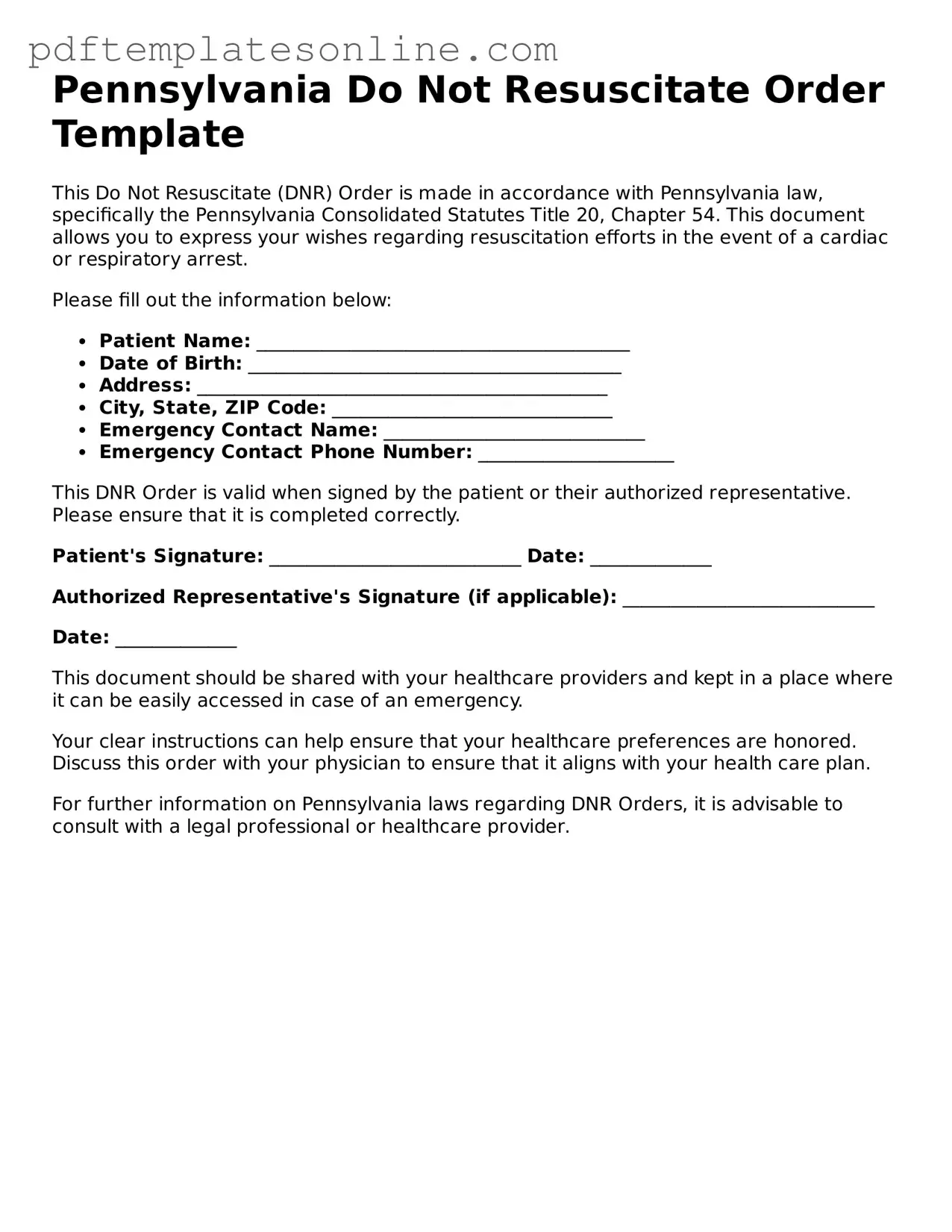Filling out the Pennsylvania Do Not Resuscitate (DNR) Order form is a critical step for individuals who wish to express their preferences regarding medical treatment in emergency situations. However, many people make mistakes that can lead to confusion or unintended consequences. Understanding these common pitfalls can help ensure that your wishes are clearly communicated and respected.
One frequent mistake is failing to provide accurate personal information. It is essential to include your full name, date of birth, and any other identifying details as required. Incomplete or incorrect information can cause delays in honoring your DNR order, potentially putting you at risk during a medical emergency.
Another common error is not having the form properly signed. Both the patient and the physician must sign the DNR order for it to be valid. Some individuals overlook this requirement, thinking that their verbal wishes alone are sufficient. Without the necessary signatures, medical personnel may not recognize the order, leading to unwanted resuscitation efforts.
Many people also forget to discuss their DNR wishes with family members and caregivers. Communication is key. If loved ones are not aware of your decision, they may feel compelled to override your wishes in a moment of crisis. Ensuring that everyone involved in your care understands your preferences can prevent unnecessary stress and confusion.
In addition, neglecting to review and update the DNR order regularly can be problematic. As health conditions change, so too might your preferences regarding resuscitation. Regularly reviewing the form ensures that it reflects your current wishes and medical situation.
Some individuals mistakenly assume that a DNR order is only necessary for terminal illnesses. This misconception can lead to a lack of action when it comes to filling out the form. A DNR order is relevant for anyone who wishes to refuse resuscitation, regardless of their current health status.
Another mistake is not understanding the limitations of the DNR order. While it instructs medical personnel not to perform CPR, it does not affect other forms of medical care. Patients may inadvertently believe that a DNR order means they will receive no medical assistance at all, which is not the case. Clarifying these details with a healthcare provider can help avoid misunderstandings.
Additionally, some people fail to keep copies of their DNR order. It is crucial to have multiple copies accessible to healthcare providers, family members, and caregivers. Without proper documentation readily available, your wishes may not be honored when it matters most.
Lastly, individuals often overlook the importance of consulting with a healthcare professional when completing the DNR order. Guidance from a doctor can provide valuable insight into the implications of the order and help ensure that it aligns with your medical needs and personal values.
By being aware of these common mistakes, individuals can take proactive steps to ensure that their DNR orders are filled out correctly and reflect their true wishes. It is vital to approach this process thoughtfully and with the necessary support.
